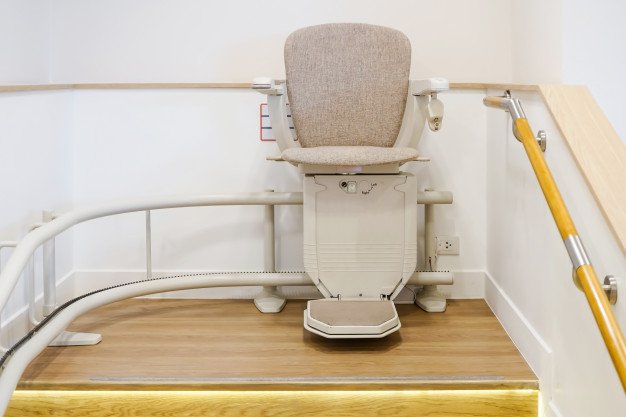Welcome, warehouse wizards and storage enthusiasts, to a world where storage solutions become extraordinary! Prepare to embark on a thrilling journey as we unveil the secrets to transforming your warehouse into a space of efficiency, organization, and, dare we say, a touch of magic.
Imagine a realm where every inch of your storage space is optimized to its fullest potential, where inventory is easily accessible with a mere flick of a wand (or swipe of a finger), and where productivity soars to spellbinding levels.
In this blog post, we will delve into innovative techniques, cutting-edge technologies, and practical strategies you manage and optimize storage in your warehouse. So gather your wands of ingenuity, don your capes of efficiency, and get ready to unlock the secrets to maximizing space utilization and streamlining warehouse operations!
The Importance Of Optimizing Storage In A Warehouse
Efficient storage management is not just a matter of convenience; it plays a crucial role in the success of any warehouse operation. The optimization of storage space holds numerous benefits, including:
- Maximizing space utilization: Warehouses often face the challenge of limited space. By optimizing storage, you can make the most of the available space, allowing for increased storage capacity without the need for expansion. Utilizing every square foot effectively ensures that inventory can be stored and accessed efficiently, minimizing wasted space and reducing the risk of overcrowding.
- Streamlining inventory management: Efficient storage systems enable better organization and categorization of inventory. With optimized storage, items are logically arranged, labeled, and easily accessible, facilitating streamlined inventory management processes. This reduces the time spent searching for items, eliminates errors in picking and packing, and improves order fulfillment speed and accuracy.
- Enhancing workflow efficiency: An optimized storage layout enables smooth workflow patterns within the warehouse. By strategically placing items closer to high-traffic areas or frequently accessed zones, you can minimize travel time, reduce congestion, and increase overall operational efficiency. This translates to improved productivity, faster order processing, and enhanced customer satisfaction.
- Preventing damage and loss: Proper storage optimization includes considerations for the safe and secure handling of inventory. By utilizing appropriate storage solutions such as racks, shelves, or automated systems, you can prevent damage caused by improper stacking, mishandling, or environmental factors. This reduces the risk of product loss, minimizes inventory shrinkage, and protects the overall value of stored goods.
- Cost savings: By optimizing space utilization, you can avoid unnecessary expenses associated with expanding or relocating to larger facilities. Additionally, streamlined inventory management reduces the risk of overstocking or understocking, optimizing stock levels and minimizing holding costs. Lastly, improved workflow efficiency enhances labor productivity, reducing labor costs over time.
- Safety and compliance: An optimized storage system promotes a safer working environment by reducing clutter, eliminating obstacles, and ensuring compliance with safety regulations. By implementing proper storage techniques and utilizing safety features such as guardrails, signage, and designated walkways, you can mitigate the risk of accidents, injuries, and potential liability issues.
Top 3 Ways To Optimize Storage In Your Warehouse
Now that we understand the importance of optimizing storage in a warehouse, it’s time to unveil the top three strategies that will help you unlock the full potential of your storage space. These strategies will guide you toward achieving maximum efficiency, organization, and productivity.
1. Efficient Space Planning
Efficient space planning is a fundamental step toward optimizing storage in your warehouse. By carefully analyzing and organizing your available space, you can make the most of every square foot, effectively utilizing the area to its maximum potential.
Here are some vital considerations for efficient space planning:
- Evaluate layout: Start by assessing your warehouse layout and identifying areas where space is underutilized or inefficiently used. Look for opportunities to rearrange shelving, racks, and workstations to create a more streamlined and accessible flow.
- Categorize inventory: Classify your inventory based on the frequency of use, size, weight, and other relevant factors. This allows you to allocate appropriate storage space based on the specific needs of each item. Consider implementing an inventory management system to aid in categorization and tracking.
- Optimize aisles: Optimal aisle width is crucial for efficient movement within the warehouse. Strive for a balance between aisle space and storage capacity. Narrower aisles can maximize storage density, while wider aisles facilitate ease of navigation and equipment maneuverability.
- Implement clear signage: Clear and visible signage plays a vital role in efficient space planning. Labeling storage areas, shelves, and sections helps employees locate items quickly, reducing time spent searching and minimizing errors.
2. Utilizing Vertical Storage Solutions
One of the most effective ways to optimize storage in your warehouse is by harnessing the power of vertical space. Vertical storage solutions make efficient use of the height of your facility, allowing you to store more items without expanding your floor area. Here are key strategies for utilizing vertical storage:
- Vertical racking systems: Install vertical racking systems, such as pallet racking or cantilever racks, to stack items vertically. These systems provide sturdy support and can accommodate various types of inventory, optimizing space utilization.
- Mezzanine floors: Mezzanine floors effectively double your storage space by utilizing vertical height. They are ideal for storing smaller or lighter items.
- Vertical lift modules (VLMs): These compact units consist of vertically arranged trays that store and retrieve items with the push of a button. VLMs are particularly useful for storing small to medium-sized items and optimizing picking and retrieval processes.
- Carousel systems: Carousel systems, also known as vertical carousels or lift modules, consist of rotating shelves or trays that bring items directly to the operator. These systems minimize travel time, increase picking efficiency, and maximize storage capacity in a compact footprint.
Automated storage and retrieval systems (AS/RS): AS/RS solutions combine advanced technology and automation to optimize vertical storage. These systems use robotic cranes or shuttles to retrieve and store items, maximizing storage density and streamlining operations.
Modula Inc. revolutionizes inventory management with its vertical storage solutions. Their efficient products, like the Modula Vertical Lift Module (VLM), optimize space in warehouses worldwide. Contact them for tailored storage solutions and expert guidance.
3. Implementing Inventory Management Systems
Implementing an inventory management system is a crucial step in optimizing storage and streamlining warehouse operations. These systems provide real-time visibility into inventory levels, locations, and movement, enabling better control and efficient utilization of storage space.
Here’s how implementing an inventory management system can enhance storage optimization:
- Centralized inventory tracking: An inventory management system allows you to centralize inventory tracking, providing a comprehensive view of your stock levels across various locations. You can easily monitor inventory movement, identify slow-moving or obsolete items, and make data-driven decisions to optimize storage allocation.
- Demand forecasting and planning: Advanced inventory management systems often include demand forecasting capabilities. By analyzing historical data, sales trends, and market insights, these systems can help you forecast future demand accurately. This enables proactive inventory planning and optimization, reducing excess stock and ensuring adequate storage space for high-demand items.
- FIFO and lot control: For businesses handling perishable or time-sensitive goods, implementing inventory management systems that support First-In, First-Out (FIFO), and lot control is essential. These features ensure proper rotation of inventory, minimize waste, and prevent expired or obsolete items from occupying valuable storage space.
- Real-time alerts and notifications: Inventory management systems can send real-time alerts and notifications when inventory levels reach predefined thresholds. This ensures timely replenishment and prevents stockouts or overstock situations, optimizing storage space by maintaining optimal inventory levels.
- Barcode or RFID integration: Integrating barcode or RFID technology with your inventory management system enables seamless tracking and accurate identification of items. This streamlines picking, receiving, and inventory reconciliation processes, reducing errors and improving overall efficiency.
Final Thoughts
Optimizing storage in your warehouse is not just a mundane task but a transformative journey that can have a significant impact on your overall business success. It requires strategic planning, efficient use of space, and implementation of advanced systems.
By embracing warehouse optimization, you can maximize storage capacity, streamline operations, and improve overall efficiency.
So, don’t wait any longer—start implementing these strategies today to transform your warehouse into a well-organized and highly productive space!
Read Also:






















